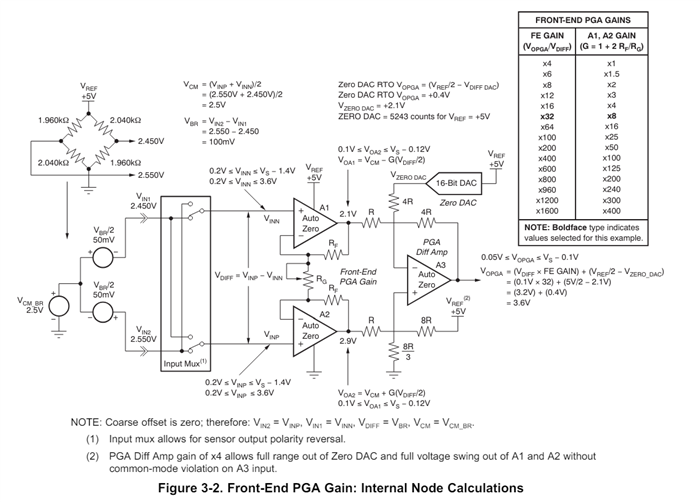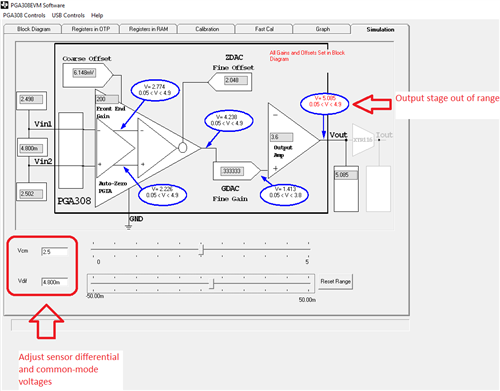Tool/software:
Good morning Support Team,
I found the following stated on the datasheet:
Linear input range is the allowed min/max voltage on the VIN1 and VIN2 pins for the front-end PGA to continue to operate in a linear
region. The allowed common-mode and differential voltage depends on gain and offset settings. Refer to the PGA308 User's Guide
(SBOU069), for more information.
However, I'm unable to locate the allowed differential input voltage range permitted in the User Guide.
I have an application that requires indirect output from the PGA308 (i.e. increased output with decreased input differential voltage & vice-versa) which I could do using a difference amplifier at the output of PGA308 but I don't want to if this can be achieved using the mux bit to ensure negative differential input voltage.
Will you please explain how to find out the rated differential input voltage range for the PGA308 & if what my application requires can be achieved by the PGA308 alone?
Thanks...





